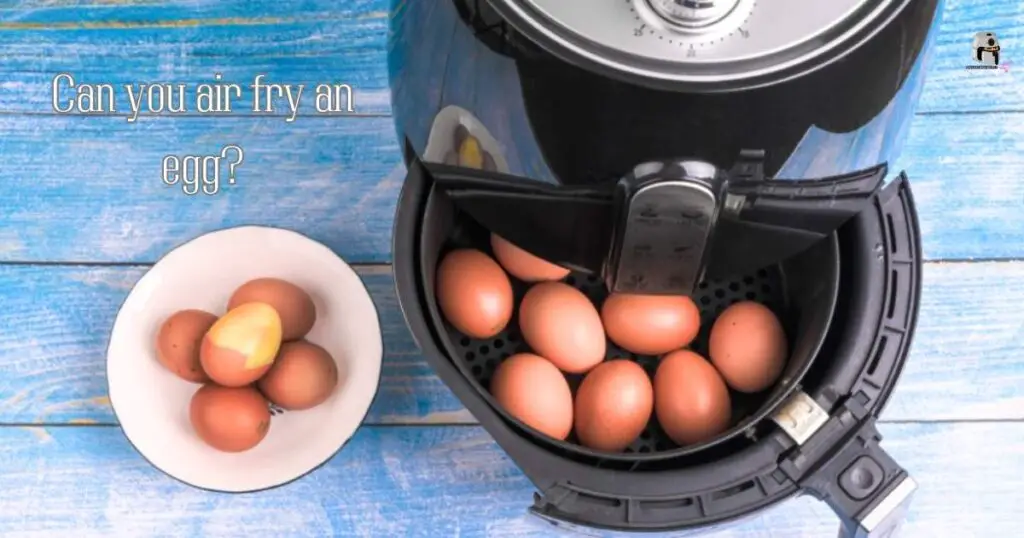Table Of Contents
Yes, you can air fry frozen cauliflower with a fantastic culinary option. Air frying is an excellent method for transforming frozen cauliflower into a crispy and flavorful treat. This technique requires no thawing and is incredibly convenient for quick, healthy snacks or side dishes.
By following a few simple steps, you can achieve cauliflower that’s crispy on the outside and tender on the inside. From simple salt and pepper seasoning to more adventurous flavor combinations, air-frying frozen cauliflower opens up a world of culinary possibilities that are both delicious and time-efficient.

Can I Air Fry Frozen Cauliflower?
As I said before definitely you can. However, Air-frying frozen cauliflower offers a host of advantages, making it a versatile and appealing choice for various culinary needs, Here’s Why Frozen Cauliflower in an Air Fryer:
Unmatched Convenience
Frozen cauliflower is incredibly convenient as it eliminates the need for extensive prep work. You can skip the washing, cutting, and trimming typically required with fresh cauliflower, saving valuable time in the kitchen.
Rapid Preparation
Air frying frozen cauliflower is exceptionally time-efficient. Within minutes, you can transform frozen florets into a crispy, golden delight, making it a perfect choice for those busy weeknight dinners or impromptu snack cravings.
Desirable Texture
Air frying imparts a unique texture to frozen cauliflower that’s hard to achieve through other cooking methods. It results in a crispy and lightly browned exterior, while the interior remains tender and flavorful, offering a delightful contrast in texture.
Versatility in Flavor
Frozen cauliflower serves as a versatile canvas for culinary experimentation. You can season it with various spices, herbs, or sauces to create various flavor profiles, from classic garlic and parmesan to spicy buffalo or tangy barbecue.
Healthier Option
Air frying utilizes significantly less oil compared to traditional frying methods, making it a healthier choice for enjoying crispy cauliflower. It retains the crunchiness without the excess grease, reducing calorie intake and saturated fat content.
Reduced Food Waste
Utilizing frozen cauliflower minimizes the risk of fresh produce going bad in your refrigerator, helping to curb food waste—a significant concern in today’s sustainability-conscious world.
Year Round Availability
Frozen cauliflower, a versatile staple, offers year-round convenience and is ideal for various culinary creations. It’s a dependable option when fresh cauliflower is scarce due to seasonality.
How to Air Fry Frozen Cauliflower
Air frying frozen cauliflower is a straightforward process that yields crispy and flavorful results. Here’s how to do it:
- Frozen cauliflower florets
- Olive oil (or preferred cooking oil)
- Seasonings (e.g., salt, pepper, garlic powder, paprika, or herbs)
- Preheat the Air Fryer
Start by preheating your air fryer to approximately 375°F (190°C). Preheating ensures that the cauliflower cooks evenly and becomes crispy.
- Prepare the Cauliflower
Take the frozen cauliflower florets directly from the freezer. No need to thaw them in advance. If you prefer smaller pieces, you can cut the florets into bite-sized portions.
- Season the Cauliflower
In a bowl, drizzle the frozen cauliflower with a bit of olive oil. This will facilitate crispiness and aid in the seasonings adhering. Add your preferred seasonings, such as salt, pepper, garlic powder, paprika, or any herbs you like. Toss the cauliflower gently to ensure an even coating.
- Arrange in the Air Fryer
Place the seasoned cauliflower florets in a single layer in the air fryer basket. It’s essential to avoid overcrowding so the hot air can circulate each piece and ensure even cooking.
- Set the Air Fryer
Adjust the air fryer to a temperature of 375°F (190°C). Cook the cauliflower for approximately 15- 20 minutes, depending on your preferred level of crispiness. Be sure to shake or flip the florets halfway through the cooking time for uniform browning.
- Check for Doneness
After the allotted cooking time, check the cauliflower for doneness. It should be golden brown and crispy on the outside while still tender on the inside. If needed, you can continue air frying for a few more minutes.
- Serve Immediately
Once the cauliflower is crispy and beautifully browned, remove it from the air fryer. Serve it immediately as a delicious snack, a side dish, or even as an ingredient in other recipes.
- Optional Dipping Sauce
For added flavor, consider serving your air-fried cauliflower with a dipping sauce of your choice. Popular options include ranch dressing, barbecue sauce, tzatziki, or a spicy aioli.
Read More: How Long to Air Fry Frozen Waffles?
Why is My Frozen Cauliflower Mushy
Frozen cauliflower can become mushy when air frying due to several factors:
Excess Moisture
Frozen vegetables, including cauliflower, are often blanched before freezing to preserve their quality. This blanching process can introduce moisture into the vegetable. If the cauliflower is not properly dried before cooking, this excess moisture can lead to steaming instead of the desired texture, resulting in mushiness.
Overcooking
Overcooking is a common cause of mushy cauliflower. If the cauliflower is cooked for too long, it can break down and lose its firmness. It’s essential to monitor the cooking time closely and remove the cauliflower from heat when it reaches the desired level of tenderness.
Overcrowding
Overcrowding the cooking vessel, such as a pot or pan, is another factor that can lead to mushy cauliflower. When too many florets are crammed together, it hinders proper air circulation, resulting in uneven cooking. Some pieces may become mushy while others stay firmer.
Low Heat
Using a lower heat setting than recommended can extend the cooking time and result in mushy cauliflower. Adequate heat is necessary to cook the cauliflower quickly and maintain its texture.
Thawing and Draining
If you choose to thaw frozen cauliflower before cooking, ensure you drain it thoroughly. Excess water retained from thawing can contribute to mushiness during cooking if not removed.
Seasoning Timing
Seasoning with salt too early in the cooking process can draw out moisture from the cauliflower. This excess moisture can lead to a mushy texture. It’s often better to season towards the end of cooking or after cooking is complete.
Read More: Why My French Fries Are Not Crispy in Air Fryer?
How Do You Keep Frozen Cauliflower From Getting Mushy
To prevent frozen cauliflower from becoming mushy when cooking, follow these steps:
Thaw and Drain (Optional)
While it’s possible to cook frozen cauliflower directly, for certain recipes, consider thawing and draining it first. Place the frozen cauliflower in a colander and run cold water over it until it thaws. Then, allow it to drain thoroughly. This step helps remove excess moisture that can lead to mushiness during cooking.
Mind the Cooking Time
Avoid overcooking the cauliflower. Overcooking is a common culprit for mushy texture. The goal is to achieve a slightly tender yet crisp texture. Test the cauliflower with a fork or knife to assess doneness. It should be easy to pierce while maintaining its shape.
Avoid Crowding
Ensure that there is adequate space between the cauliflower florets or pieces during cooking. Overcrowding can trap steam, hindering proper air circulation and resulting in uneven cooking. Some pieces may become mushy while others remain firmer. Cook in batches if necessary to avoid crowding.
Use High Heat (for certain methods)
When roasting or sautéing frozen cauliflower, opt for high heat settings. Higher temperatures help evaporate moisture quickly, reducing the likelihood of mushiness. However, balance high heat with attentive cooking to avoid burning.
Dry the Cauliflower
Before cooking, pat the frozen cauliflower dry with paper towels. This step is crucial to remove any surface moisture, as excess moisture can contribute to mushiness. Dry cauliflower facilitates better browning and texture.
Consider Seasoning Timing
Be strategic with seasoning. Adding salt or sauces too early in the cooking process can draw out moisture from the cauliflower, potentially leading to a softer texture. Consider seasoning towards the end of cooking or after it’s done.
Explore Cooking Methods
Different cooking methods yield varied results. Roasting or air-frying frozen cauliflower can help maintain a firmer texture by removing moisture and promoting browning. Steaming or blanching might result in a softer texture, which can be desirable for some recipes.
Fresh vs. Frozen
Remember that fresh cauliflower generally has less moisture content than frozen. If you have the option, using fresh cauliflower may give you more control over the cooking process and texture.
How to Reheat Cauliflower in the Air Fryer
Reheating cauliflower in the air fryer is quick and can help restore its crispiness. Here’s how to do it:
- Begin by preheating your air fryer to around 375°F (190°C). Preheating ensures that the cauliflower reheats evenly and maintains its crispy texture.
- Place the leftover cauliflower in the air fryer basket. If the cauliflower pieces are large or clumped together, consider breaking them apart slightly to ensure even reheating. You can reheat both fresh and frozen cauliflower directly in the air fryer without the need for thawing.
- Set the air fryer timer for approximately 5-7 minutes. This is a general guideline, and the actual time may vary depending on the quantity and size of the cauliflower pieces. The goal is to achieve the desired level of warmth and crispiness.
- About halfway through the reheating process, pause the air fryer and open the basket. Shake it or gently toss the cauliflower to ensure that all sides receive even heat. This step helps maintain uniform crispiness.
- After the recommended reheating time, check the cauliflower’s temperature to ensure it’s hot enough for your liking. Insert a fork or knife into a piece to test its warmth.
- Once the cauliflower is reheated to your satisfaction, transfer it to a serving dish immediately. Serve it as a tasty side dish or snack.
FAQs
Is It Ok to Directly Put Frozen Cauliflower in the Air Fryer
Yes, it’s okay to put frozen cauliflower directly into the air fryer without thawing. However, ensure the cauliflower is well spaced out to allow proper airflow and prevent overcrowding. This helps achieve the desired crispy texture when air frying.
How Long Do You Cook Frozen Cauliflower in Air Fryer
For a 12 oz bag of frozen cauliflower, air frying at 400°F typically takes around 10-12 minutes. However, larger batches may require double the time. Cooking times can vary slightly between air fryers, so it’s advisable to periodically check for the desired doneness by opening the basket.
Can You Eat Frozen Cauliflower Raw
Yes, you can eat frozen cauliflower raw after thorough washing to remove any potential chemical residues. For a cleaner wash, consider using hot water after separating the florets from the head. You can savor them with your favorite dipping sauce and even pair them with raw broccoli and carrots for a nutritious and tasty snack.
What Goes Well With Frozen Cauliflower
Cauliflower pairs wonderfully with various flavors, including butter, Pecorino cheese, lemon, potatoes, and chickpeas. For this recipe, it complements well with dips like Hummus, Chipotle Ranch, or Blue Cheese Sauce. It also serves as a delightful side alongside dishes like Lemon Basil Chicken, Air Fryer Rib Eye Steak, or seasoned Chicken Drumsticks.
Final Verdict
Air-frying frozen cauliflower is a fantastic idea! It’s a convenient and quick way to achieve crispy, golden-brown cauliflower with a tender interior. Whether you’re craving a delicious snack or a versatile side dish, the air fryer delivers.
Just remember to space out the florets for optimal airflow and periodically check for that perfect crispness. With minimal effort, you can enjoy a delightful cauliflower treat that’s both healthy and irresistibly tasty.
So, go ahead and let your air fryer work its magic on frozen cauliflower for a delightful culinary experience!
You May Also Like To Read:







